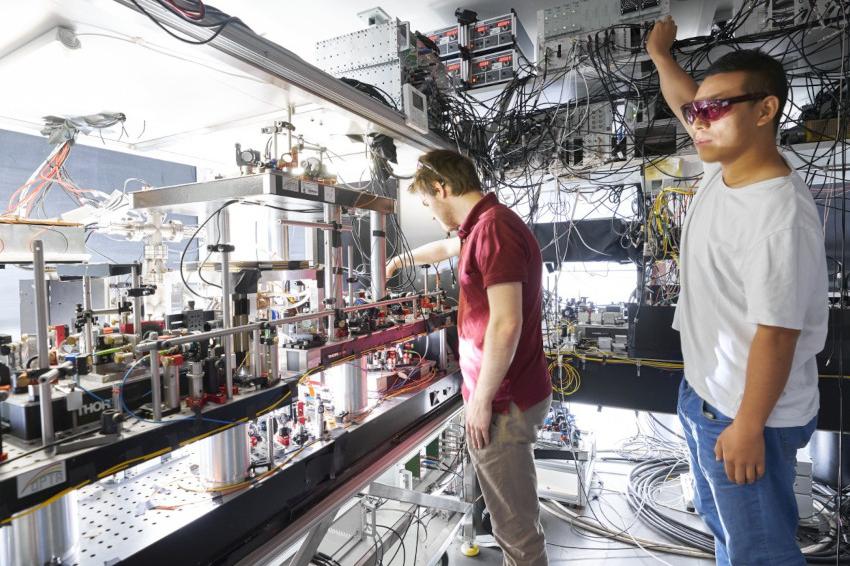Record entanglement of quantum memories
An important step toward a future quantum internet
A network in which data transmission is perfectly secure against hacking? If physicists have their way, this will become reality one day with the help of the quantum entanglement. A team led by Harald Weinfurter from University of Munich (LMU) and Christoph Becher from Saarland University have now coupled two atomic quantum memories over a 33-kilometer long fiber optic connection. This is the longest distance so far that anyone has ever managed entanglement via a telecom fiber. The quantum mechanical entanglement is mediated via photons emitted by the two quantum memories. A decisive step was the researchers’ shifting of the wavelength of the emitted light particles to a value that is used for conventional telecommunications. “By doing this, we were able to significantly reduce the loss of photons and create entangled quantum memories even over long distances of fiber optic cable,” says Weinfurter.
Generally speaking, quantum networks consist of nodes of individual quantum memories – such as atoms, ions, or defects in crystal lattices. These nodes are able to receive, store, and transmit quantum states. Mediation between the nodes can be accomplished using light particles that are exchanged either over the air or in a targeted manner via fiber optic connection. For their experiment, the researchers use a system comprised of two optically trapped rubidium atoms in two laboratories on the LMU campus. The two locations are connected via a 700-meter-long fiber optic cable, which runs underneath Geschwister Scholl Square in front of the main building of the university. By adding extra fibers on coils, connections of up to 33 kilometers in length can be achieved.
A laser pulse excites the atoms, after which they spontaneously fall back into their ground state, each thereby emitting a photon. Due to the conservation of angular momentum, the spin of the atom is entangled with the polarization of its emitted photon. These light particles can then be used to create a quantum mechanical coupling of the two atoms. To do this, the scientists sent them through the fiber optic cable to a receiver station, where a joint measurement of the photons indicates an entanglement of the quantum memories.
However, most quantum memories emit light with wavelengths in the visible or near-infrared range. “In fiber optics, these photons make it just a few kilometers before they are lost,” explains Christoph Becher. For this reason, his team optimized the wavelength of the photons for their journey in the cable. Using two quantum frequency converters, they increased the original wavelength from 780 nanometers to a wavelength of 1,517 nanometers. “This is close to the so-called telecom wavelength of around 1,550 nanometers,” says Becher. The telecom band is the frequency range in which the transmission of light in fiber optics has the lowest losses. Becher’s team accomplished the conversion with an unprecedented efficiency of 57 percent. At the same time, they managed to preserve the quality of the information stored in the photons to a high degree, which is a condition of quantum coupling.
“The significance of our experiment is that we actually entangle two stationary particles – that is to say, atoms that function as quantum memories,” says Tim van Leent. “This is much more difficult than entangling photons, but it opens up many more application possibilities.” The researchers think that the system they developed could be used to construct large-scale quantum networks and for the implementation of secure quantum communication protocols. “The experiment is an important step on the path to the quantum internet based on existing fiber optic infrastructure,” says Harald Weinfurter. (Source: LMU)
Reference: T. van Leent et al.: Entangling single atoms over 33 km telecom fibre, Nature 607, 69 (2022); DOI: 10.1038/s41586-022-04764-4
Link: Quantum Communication, Munich Center for Quantum Science and Technology, Munich, Germany







